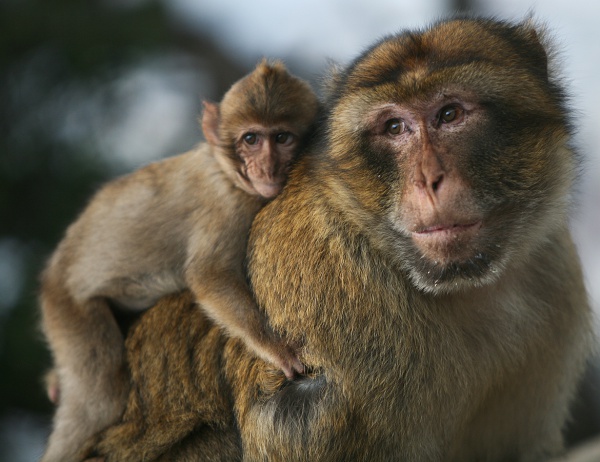Facts About Barbary macaque
The Barbary macaque, also known as the Barbary ape or magot, is a unique species of macaque that exists outside of Asia. These fascinating primates inhabit the Atlas Mountains of Algeria and Morocco, with a small but noteworthy population in Gibraltar.
One of the most intriguing aspects of Barbary macaques is the role that males play in raising the young. Due to uncertain paternity, males care for all infants within the group, a behavior that is quite atypical among primates.
In terms of diet, Barbary macaques primarily consume plants and insects. They are highly adaptable creatures, capable of inhabiting a variety of habitats. Physically, females have a mean body length of about 22 inches, while males average around 25 inches. Males typically weigh about 32 pounds, whereas females are lighter at approximately 22 pounds.
These Old World monkeys are very social, living in groups that can range from 10 to 100 individuals. The Gibraltar population is particularly noteworthy as it represents the only free-living primates in Europe, numbering around 230 individuals.
Unfortunately, the Barbary macaque faces several significant threats. Habitat loss, overgrazing, illegal capture for the pet trade, and conflicts with humans are all contributing to their decline. Interactions with tourists often negatively impact their behavior and health. Consequently, the Barbary macaque has been declared an endangered species.
Despite these challenges, the population in Gibraltar is thriving. Fossils of Barbary macaques have been discovered in various European countries, dating back to the Middle and Late Pleistocene, which demonstrates their historical presence in the region. With continued conservation efforts, there is hope that these remarkable primates can be protected and preserved for future generations.

 Western Sahara
Western Sahara